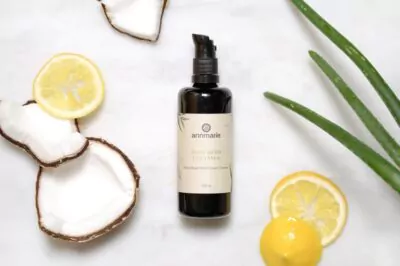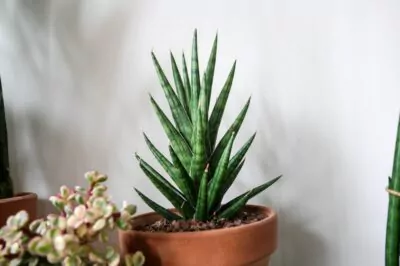From our friend Amelia at stayhealthyways.com
Are you seeking to treat your heat bumps, but you are uncertain which remedies will efficiently work without worsening the condition? Then you need to settle down and take in all you need to know about these angry little bumps.
What Are Heat Bumps?
Heat bumps is a skin condition which affects both adults and children in hot and humid weather conditions. This condition is caused by the clogging of skin pores, a state which prevents sweat from escaping. Such exposure could also trigger a condition known as rosacea. For information about this condition, follow this article.
Heat bumps could make you uncomfortable, and some might be downright painful. Depending on their severity, heat bumps are of three major types. These include:
1—Miliaria crysallina
This type is characteristic of small white or clear bumps full of fluid on the skin surface. It is the mildest and most common type. The bumps noticed as sweat bubbles which, in most cases, burst after some time. Most common in babies as opposed to adults, these bumps are rarely painful or itchy.
2—Miliaria rubra
This type is often referred to as prickly heat. It is the most common heat bump type in adults. Miliaria Rubra causes more discomfort as compared to Miliaria Crysallina since it affects the deeper part of the epidermis (outer skin).
This type is associated with a prickly or itchy sensation, an absence of sweat in the affected region, as well as red skin bumps. Due to the body’s inability to release sweat through the surface of the skin, this condition often triggers soreness and inflammation.
On the worst scenario, the bumps might fill with pus, a condition known as Miliaria Pustulosa.
3—Miliaria profunda
Even though it is the least common heat bump type, Miliaria Profunda has recurrence tendencies which make it chronic. It affects the dermis, the deeper skin layer. It is common among adults, and it results in large, tough, and flesh-colored heat bumps.
This type may also promote dizziness and nausea as the bumps block sweat from escaping from the body.
What Causes Heat Bumps?
Are you living in a warmer climate, or could you be exposed to warmer weather conditions? If yes, then you are most likely to develop heat bumps. Also, if your clothing traps sweat, you are at a higher risk of developing heat bumps.
5 ways to Treat Heat Bumps
I have had to treat heat bumps in the past. The hardest part with my condition was that the areas affected on my skin became very itchy, but I could never scratch. Although scratching the bumps would have brought relief, it would have only been for a short time and would never heal the itch, while its effects would have been worse, including breakage of the skin and possible bleeding which would have attracted more infection.
Now, let’s look at possible ways of treating heat bumps.
1—Cucumber and Coconut Oil
I am grateful that a friend finally shared the coconut oil secret. Coconut oil is essential to the reducing the effects of heat bumps. It is also rich in lauric acid which possesses powerful cleansing properties. As a result, coconut oil will help to unclog your skin powers for easy release of sweat.
On the other hand, cucumber enhances the treatment through its cooling effect which is essential in helping find relief from the burning and itching sensation of heat bumps.
How to Do It:
- Prepare three virgin coconut oil tablespoons.
- Grate half a cucumber and squeeze out its juice and mix it with the coconut oil.
- Apply the mixture to the areas affected.
- Repeat this process on a maximum of twice a day till you gain relief.
2—Ice Cubes
How well have you mastered essential injury management skills? Can you dress a Band-Aid to an injury? What about cryotherapy, the art of icing? Therapy geeks will tell you that icing is an inexpensive, efficient, and drug-free approach to pain alleviation from injuries.
An article published in Pain Science shows that when ice is safely applied to the skin, it has the potent effects of alleviating pain and related symptoms caused by the exposure of the superficial tissue to any form of trauma. Such could include tendinitis, bruises, rashes, strains, and sprains.
Therefore, ice cubes promote significant coolness which plays a critical role in soothing any uncomfortable sensations associated with heat bumps to alleviate the itchiness and redness on your skin.
How to Do It:
- Place four ice cubes in a Ziploc bag, and wrap a cloth or towel around it.
- Place the wrapped bag on your heat bumps for a minimum of ten minutes.
- Repeat this process after every four hours for the best results.
3—Aloe Vera Gel
Have you heard that aloe vera is home to 200 essential nutrients including minerals, vitamins, amino acids, digestive enzymes, and, most importantly, compounds like antioxidants with skin repair and calming effects? This is why you need to add this plant to your heat bump treatment kit.
The clear mucilaginous aloe vera gel can be applied topically to aid the heat bump healing process. Particularly, research indicates that aloe vera is effective in the reduction of symptoms.
Its ability to help soothe irritated skin is the reason aloe vera is used in numerous cosmetic and medicinal creams for the skin. Aloe vera contains salicylic acid that has healing and soothing effects. The glycoproteins present assist in pain alleviation, while the polysaccharides enhance skin rejuvenation.
Now you know why aloe vera will be a useful heat bump relief.
How to Do It:
- Extract the gel from fresh aloe vera and apply it on the areas affected by heat bumps.
- Leave it on the bumps for as long as you desire.
- During the day, repeat this process four times to eliminate redness and promote healing.
Note: Ensure that you use the gel extract from fresh aloe vera. Commercial gels may contain chemical ingredients which could further clog your skin pores thereby aggravating the heat bumps. You can see how to extract gel from aloe vera and how to preserve them in the excellent article here.
4—Oatmeal Bath
It doesn’t require you to be an Ancient Egyptian to know that oatmeal has other nutritional and medicinal uses other than just for breakfast.
Oatmeal has a long-recognition as having excellent skin condition healing properties. When you add oatmeal to your bath, you potentially soothe your heat bumps or other skin ailments. Thus, if you have never had an oatmeal bath and you are suffering from heat bumps; you probably should try it.
Oatmeal is an approved treatment for a variety of skin conditions. As revealed the U.S. Drug and Food Administrations, colloidal oatmeal is a safe and efficacious skin condition treatment, including dermatitis, heat bumps, rashes, and eczema.
But how does oatmeal help to soothe the skin? Well, research has shown that oatmeal carries the avenanthramide polyphenols which can soothe irritated and itching skin.
How to Do It:
- Prepare a cup of oatmeal and add it to a bathtub full of warm water.
- Stir well to dissolve the oatmeal.
- Soak your body for a quarter an hour.
- For ultimate relief from heat bumps, soak your body in an oatmeal bath daily.
5—Neem (Margosa) Paste
Since antiquity, herbs have amassed renown for their healing properties. Neem tree has traditionally been medicinally useful in the Indian Unani and Ayurveda medical systems. These systems have relied on the tree’s bark, roots, leaves, oil, and fruits. Today, neem has earned a reputation as a powerful tool in taking on heat bumps. If you get uncomfortable with the redness and swelling caused by heat bumps on your skin, then it is time you start mending them. All it takes is a few neem tree leaves.
Neem, (or Margosa) is one of the natural herbs with invigorating skin properties. For your heat bump condition, you will benefit from neem’s wonderful properties.
Expert analysis of the properties of neem reveals that neem is a potent skin ally. Reportedly, its leaf preparations are efficacious against a host of infected burns, septic sores, and skin conditions. When its leaves are used as decoctions or poultices, the herb can be beneficial for such multiple common skin ailments.
How to Do It:
- Create a thick paste by adding rose water to ground neem leaves.
- Evenly apply the resultant paste on the heat bumps.
- Let the past rest for a half an hour.
- Wash off with cold water.
The paste should be applied twice daily for an optimal healing effect.
Conclusion
Heat bumps are among the most common skin rash conditions. The above remedies work to regulate sweat gland hyperactivity and minimize the blockage of skin pores. The condition results in uncomfortable and painful blisters. The remedies recommended possess a cooling effect which makes them the perfect heat bump treatment. The remedies contain the necessary antioxidants which also reduce redness and unclog the pores to free sweat from your body – use these simple remedies to work with your heat bumps. Should the condition recur, just choose any of the above treatments, and you’ll experience quick relief from heat bumps.
Amelia is a writer/editor with an endless passion for bringing a lot of useful and trustworthy information to the community. She founded stayhealthyways.com, a blog dedicated to sharing quality articles related to health, nutrition, fitness, and beauty. As a typical introvert, Amelia is a perfectionist in work. At times of leisure, she reads, listens to music, chats with some close friends and walks with her pet.







